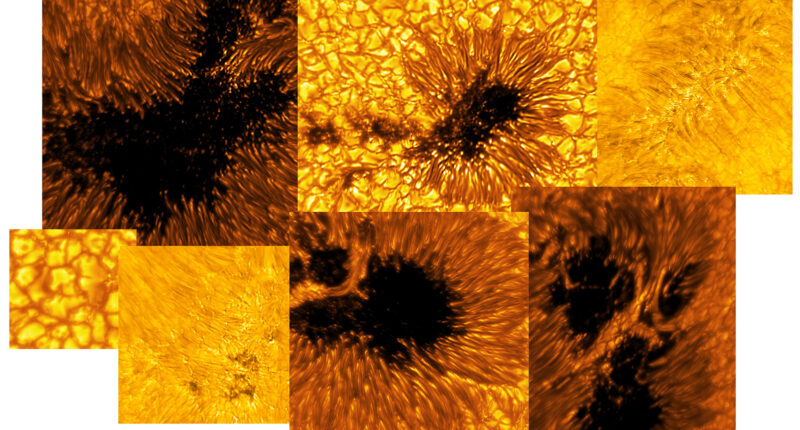SEVERAL extreme close-up photos of the sun have been released, revealing a deeper look into the star we rotate around every year.
On Friday, the National Science Foundation’s Daniel K. Inouye Solar Telescope released eight images of the sun, particularly focusing on a variety of sunspots around the star.
The breathtaking yellow and orange images show dark and cool regions on the sun’s surface, also known as the photosphere, according to the Association of Universities for Research in Astronomy (AURA).
In these areas, there are strong magnetic fields, where sunspots typically form.
Sunspots are cooler parts of the sun’s surface and can vary in size. However, research has shown that many are sometimes the size of Earth or even bigger.
They last anywhere from a few hours to a few months and appear to vary with “an approximately 11-year repetition known as the solar cycle,” according to the National Oceanic and Atmospheric Administration.
In one of the images released, what is known as a light bridge is present across the sunspot’s umbra – the dark and central region of the spot.
While these light bridges are complex and still being researched, scientists believe they are “the signature of the start of a decaying sunspot which will eventually break apart.”
A second image also featured a light bridge across a sunspot as well as the presence of “convection cells.”
“Hot solar material (plasma) rises in the bright centers of these surrounding “cells,” cools off, and then sinks below the surface in dark lanes in a process known as convection,” according to AURA.
Most read in News Tech
Through the photos, scientists hope to continue to research the sun’s magnetic field as well as what creates solar storms.
The images were taken using the Daniel K. Inouye Solar Telescope’s Visible-Broadband Imager camera.
The telescope, located on Maui, Hawaii, is currently considered to be the largest solar telescope on the planet at 13 feet 11 inches in diameter.
Currently, the telescope is in an operations commissioning phase as it is brought up to its full capacity after construction was completed in November 2021.
Researchers are continuing to receive and study data supplied by the telescope’s data center, as these images are just a “small fraction” of the information recently received, according to AURA.
As time progresses and the telescope widens its capacities, the research community is excited about the data it is expected to find.
“As the Inouye Solar Telescope continues to explore the sun, we expect more new and exciting results from the scientific community—including spectacular views of our solar system’s most influential celestial body,” AURA said.













